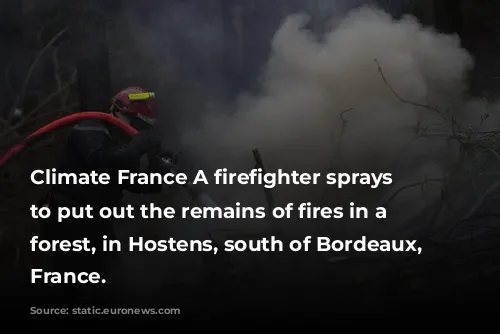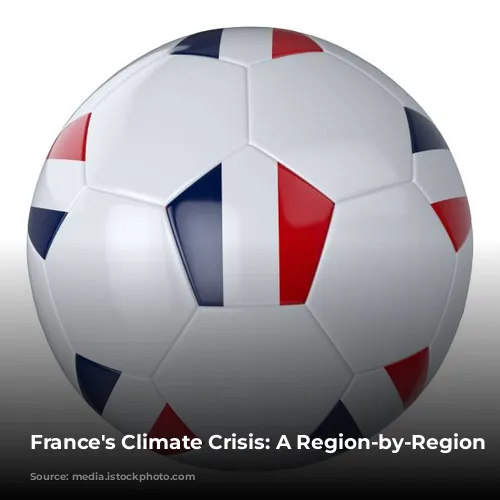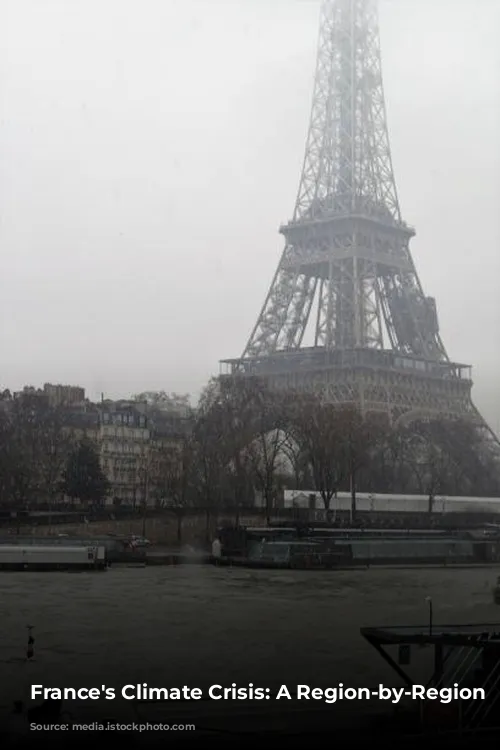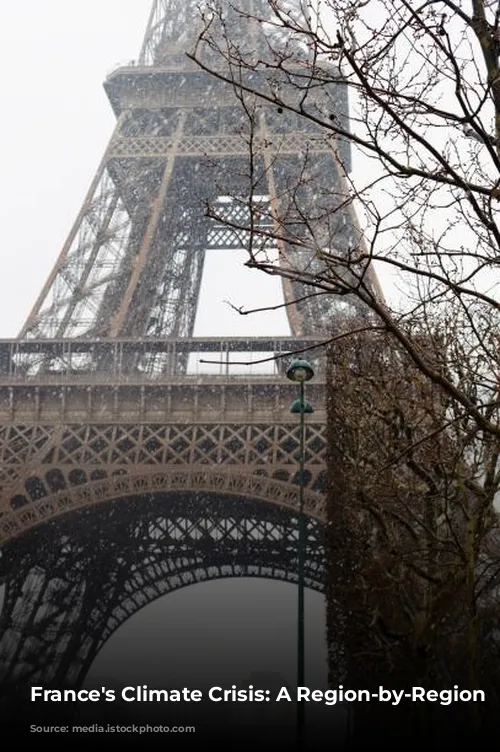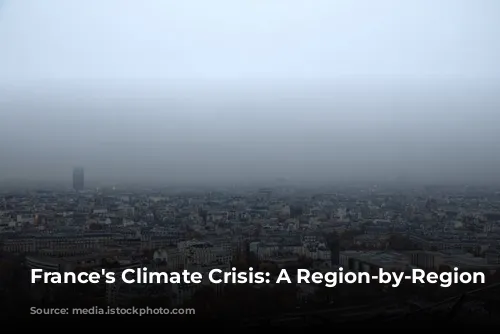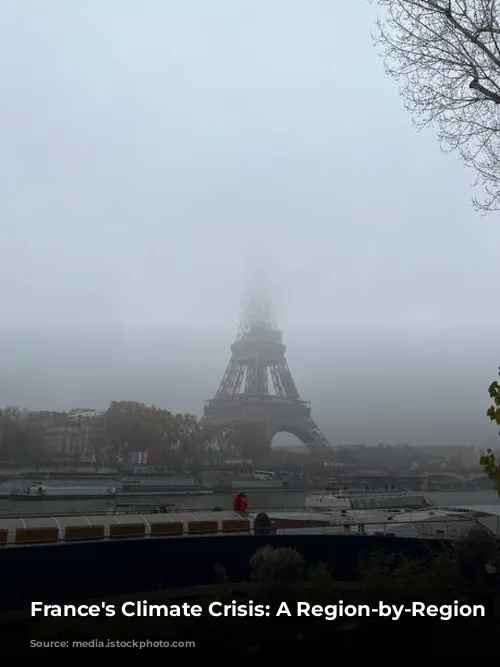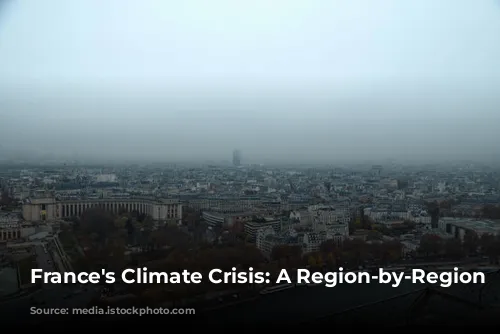Get ready for a reality check! This article dives into the alarming details of how climate change is already impacting France, region by region. We’ll explore the threats each area faces, from scorching heatwaves to devastating floods, and uncover why urgent action is needed now.
Hold on tight, because the future isn’t looking rosy. A new report from a network of environmental groups paints a bleak picture of what’s to come if we don’t act swiftly.
A Nation Divided: The Impacts of Climate Change
This report acts as a vital roadmap for local authorities to adapt and accelerate the green transition. It’s a stark warning that the climate crisis is not a distant threat – it’s already here and escalating.
The authors paint a stark picture: drought, flooding, and extreme temperatures are expected to hit France with increasing intensity. The report pinpoints the most pressing threats for each of the country’s 18 regions, both on the mainland and overseas.
It’s clear that France, with its diverse landscapes, is facing a climate crisis unlike any other. The report highlights the unique vulnerabilities of each region, showing that while all are experiencing climate change’s effects, the specific challenges vary greatly.
A Thirsty Nation: Drought’s Grip on France
Across France, drought is a growing concern. The report warns of rising tensions as households, agriculture, and industries compete for dwindling water resources. This struggle for water is only set to intensify as some projections show the Loire River, a vital artery for France, could see its flow decrease by up to 50% in the years to come.
One of the most affected regions is Nouvelle-Aquitaine, a vast and varied landscape with forests, coastlines, and mountains. This rich tapestry of environments makes it a hotbed for climate change, with 69% of its population facing at least one climate hazard.
Drought is the most pressing threat, impacting a vast majority of Nouvelle-Aquitaine’s residents. The region has experienced a series of severe droughts in recent years, culminating in the record-breaking drought of 2022. Temperatures soared, hitting over 30°C for more than 70 days, creating a cascade of problems.
Drought doesn’t stand alone; it worsens other climate-related risks across the nation. Extreme dry weather fuels wildfires in forested areas, degrades soil, leading to increased flooding in other regions, and puts immense pressure on already strained agricultural resources.
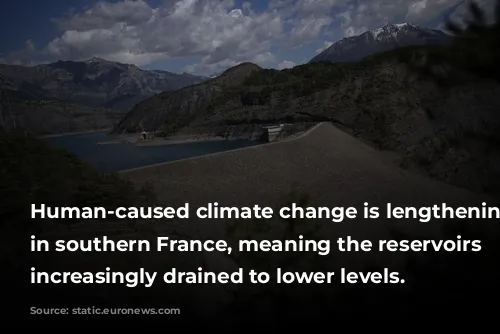
Cities Under Siege: Extreme Heat Threatens Urban Life
France’s cities, particularly the bustling capital, Paris, are highly vulnerable to extreme heat. While France has experienced an average warming of 1.9°C, the current climate policies could lead to a staggering 4°C increase by 2100.
Paris and the surrounding Ile-de-France region are among the first to face the brunt of extreme temperatures. These regions are projected to experience 30 days of heatwaves annually by 2050, with temperatures potentially reaching a sweltering 50°C.
The urban landscape itself exacerbates the heat problem. The dense concentration of concrete, metal, and other heat-absorbing materials creates a “heat island effect,” trapping heat and driving up temperatures. Paris, for example, has already experienced an average temperature increase of 2°C since the mid-20th century.
This excessive heat is a serious public health concern. A study by the Lancet Planetary Health identified Paris as one of the European cities with the highest risk of heat-related deaths.
While Paris faces the most immediate threat, other major French cities are also grappling with this escalating heat crisis.
Flood Risks Rise: Coastal Erosion and Rising Sea Levels
In the north, Hauts-de-France is facing a different kind of threat: severe flooding. Six out of ten municipalities, home to 2.2 million people, are at risk. The region experienced devastating floods in November 2023, when torrential rainfall, equivalent to three months’ worth, fell in just two weeks. This catastrophic event impacted 244 municipalities, affecting a staggering 450,000 inhabitants.
The rapid urbanization of Hauts-de-France has altered the soil’s ability to absorb water. This modification, combined with increasingly intense rainfall, leads to a heightened risk of flooding.
Brittany, with its extensive coastline, is grappling with the threat of rising sea levels. Sea levels in Brest have risen by 20 cm since 1900, with a significant acceleration since 1970.
The rising sea levels pose a direct threat to coastal communities. Around 130,000 people in Brittany are at risk of submersion, with Saint-Malo, where 25,000 residents live below sea level, being particularly vulnerable.
Rising sea levels also exacerbate coastal erosion, a threat that will intensify with climate change.
The Future is in Our Hands: A Call for Action
This detailed report, a collaborative effort between Reseau Action Climat (RAC) and the Agency for Ecological Transition (Ademe), is a powerful call to action. It’s a sobering reminder that the climate crisis is real, and we need to act now to mitigate its devastating effects.
The report emphasizes the urgency of tackling the climate crisis. It uses data from trusted sources, including the Intergovernmental Panel on Climate Change (IPCC), Météo-France, and the High Council on Climate, to create a comprehensive picture of climate-related risks across France.
The report’s authors stress that urgent action is needed. They argue that the scenarios presented in the report, while alarming, are not set in stone. We can still choose to act, to reduce our emissions, and to adapt to the changes we face.
The report is not simply a list of problems; it’s a roadmap for action. It provides a clear understanding of the challenges faced by each region, enabling local authorities to develop effective strategies to adapt and mitigate climate risks.
However, taking action requires resources. The Institute for Climate Economics estimates that local authorities need to more than double their investment in the ecological transition, from €8.4 billion annually to €19 billion. This increase in funding would allow local authorities to hire additional staff, invest in sustainable infrastructure, and implement effective climate policies.
While a dedicated “green transition fund” was established, it has faced significant cuts. This alarming trend underscores the need for political commitment and investment in the fight against climate change.
The future of France, and indeed the world, depends on our willingness to act. We must heed the warnings in this report and embrace a green transition that prioritizes sustainability and resilience. Only by taking collective action can we hope to avert the worst impacts of climate change and secure a brighter future for generations to come.
